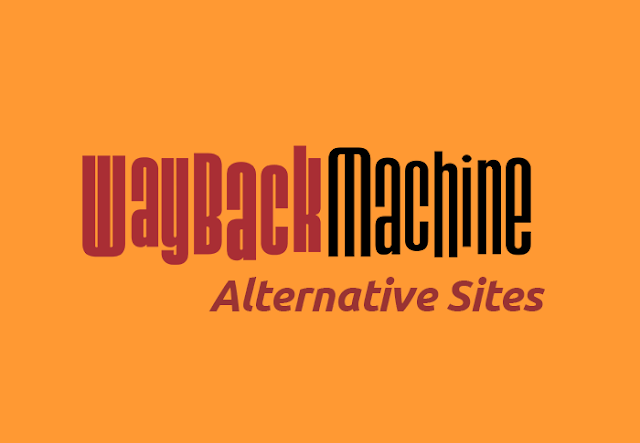4 Wayback Machine Alternatives
The Wayback Machine is not the only digital archive available today, and this post aims to highlight and discuss four alternatives and their key features.

The World Wide Web has been a unique information resource that, over time, grew massively and is used globally. Much of its content today can add value not just to the current generation but also to future generations. To ensure future generations can also benefit from the contents of the World Wide Web, the use of web archiving technologies is essential for preserving an open and transparent internet. According to Pennock in 2013, web archiving technologies enables the capture, preservation, and reproduction of valuable content from the live web. Web archiving technologies does this in an archival setting so that they can be independently managed and preserved for future generations. The Wayback Machine is an example of web archiving technology that can preserve the contents of the World Wide web for future generations.
The Internet Archive, a San Francisco, California based non-profit organization, created The Wayback Machine. Though launched in October 2001, it has been archiving cached pages of websites onto its large cluster of LINUX nodes since 1996. According to the Internet Archive, today, The Wayback Machine's archive contains 330 billion web pages, 20 million books, and texts, 4.5 million audio recordings (including 180,000 live concerts), 4 million videos (including 1.6 million Television News programs), 3 million images, and, 200,000 software programs. The Wayback Machine is not the only digital archive available today, and this post aims to highlight and discuss four (4) alternatives and their key features.
- Memento Time Travel – Prior versions of web pages are named Mementos. Mementos can be found in web archives or in systems that support versioning such as wikis and revision control systems. Time Travel tries to locate, Mementos for that page that date back from around the time of your choice. The service returns a list of Mementos, one per archive that holds one. In most cases, Mementos found will not precisely match the requested time for the simple reason that the page was not preserved then.
- Features:
- Self-archives web server content.
- It checks the whole range of servers to search web pages.
- It provides a bar chart showing checked and missing components.
- You can see the distribution of archival DateTime using the timeline.
- It focusses on various components like HTML, style sheets, and images.
- This website displays web page components based on the time requested by you.
- Features:
- Perma.cc– Perma.cc is a web archiving app developed and maintained by the Harvard Law School Library. When users go to the Perma.cc website and input a URL, Perma.cc downloads the material at that URL and gives back a new URL that can then be inserted in a paper, article, blog, or whatever the author needs. Readers who encounter Perma.cc links can click on them like ordinary URLs. Perma.cc relies on a distributed set of journals and libraries for administration.
- Features:
- You can delete links within 24 hours after creation.
- It helps you to view archived records through the Perma.cc link.
- Individuals can get access to permalinks via tiered subscriptions.
- If the preservation fails, this app gives you options to upload PDF files or images.
- You can assign users to any organization by merely submitting the user's email address into this cloud-based program.
- Features:
- Stillio– Founded in 2011, Stillio operates from Amersfoort, an ancient city in the heart of The Netherlands close to Amsterdam. Stillio makes it easy for you to archive web pages. With their automated screenshot service, you can archive relevant web pages, keep records for regulatory compliance, track competitors, and improve SEO ranking insights. Additionally, you can verify ads, monitor copyright infringements, track trends, and capture your online digital heritage.
- Features:
- It supports URL sharing.
- You can add multiple URLs at once.
- You can save the screenshot to Dropbox.
- This tool enables you to filter URLs by domain.
- You can hide unwanted elements like overlays, banners, or cookie popups.
- You can set screenshot frequencies according to your customized duration.
- Stillio helps you to take a screenshot from the website geographic location by identifying it's IP address.
- Features:
- UK Web Archive – The UK Web Archive is a collaboration between all the UK Legal Deposit Libraries. It aims to collect all UK websites at least once per year. It is typical for them to be created quickly, changed regularly, and sometimes to disappear altogether often without notice. Despite this lack of permanence, The UK Web Archive attempts to collect, preserve and give access to this material for current and future researchers of all kinds, from scholars and professionals to family historians and those with a general interest.
- Features:
- This app collects images, videos, HTML pages, pdf.
- You can use this website to search for UK web archives.
- It allows you to discover the website on various themes and topics.
- It performs an automated collection of a range of UK website in one year.
Though the Wayback Machine may be the most extensive database ever and could very well be the best website archive website, several other alternatives offer similar and sometimes additional features
